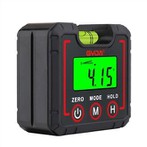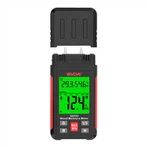Specific steps for measuring three-phase current with clamp ammeter
1. First, correctly select the voltage level of the clamp-type ammeter, check whether its insulation is good, whether it is damaged, whether the pointer swings flexibly, and whether the jaws are rusted, etc. Estimate the rated current based on the motor power to select the range of the meter.
2. Before using the clamp ammeter, you should read the instruction manual carefully to find out whether it is an AC or AC-DC dual-purpose clamp meter.
3. Since the accuracy of the clamp ammeter itself is low, when measuring small currents, the following method can be used: first wind the wire of the circuit under test several times, and then put it into the jaws of the clamp meter for measurement. At this time, the current value indicated by the clamp meter is not the actual value being measured. The actual current should be the reading of the clamp meter divided by the number of turns of the wire.
4. The jaws of the clamp meter should be closed tightly during measurement. If there is noise after closing, you can open the jaws and reset it once. If the noise still cannot be eliminated, check whether the joint surfaces on the magnetic circuit are smooth and clean. If there is dust, Wipe clean.
5. The clamp meter can only measure the current of one phase conductor at a time. The conductor to be measured should be placed in the center of the clamp window. Multi-phase conductors cannot be clamped into the window for measurement.
6. The voltage of the circuit under test cannot exceed the value indicated on the clamp meter, otherwise it may easily cause a grounding accident or cause an electric shock hazard.
7. Measure the operating current of the cage-type asynchronous motor during operation. According to the current size, you can check and judge whether the motor is working normally to ensure the safe operation of the motor and extend its service life.
8. When measuring, you can measure each phase once, or you can measure once for three phases. At this time, the number on the meter should be zero (because the sum of the three-phase current phasors is zero). When there are two phase wires in the jaw, the number on the meter should be zero. The value displayed above is the current value of the third phase. By measuring the current of each phase, it can be judged whether the motor is overloaded (the measured current exceeds the rated current value), inside the motor or (a device that converts other forms of energy into electrical energy is called a power supply) Is there a problem with the power supply voltage, that is, whether the three-phase current imbalance exceeds the 10% limit.
9. Before measuring with a clamp meter, you should first estimate the size of the current being measured, and then decide which range to use. If it is impossible to estimate, you can first use the maximum range and then change it to a smaller range to get an accurate reading. You cannot use the small current range to measure large currents. to prevent damage to the instrument.





